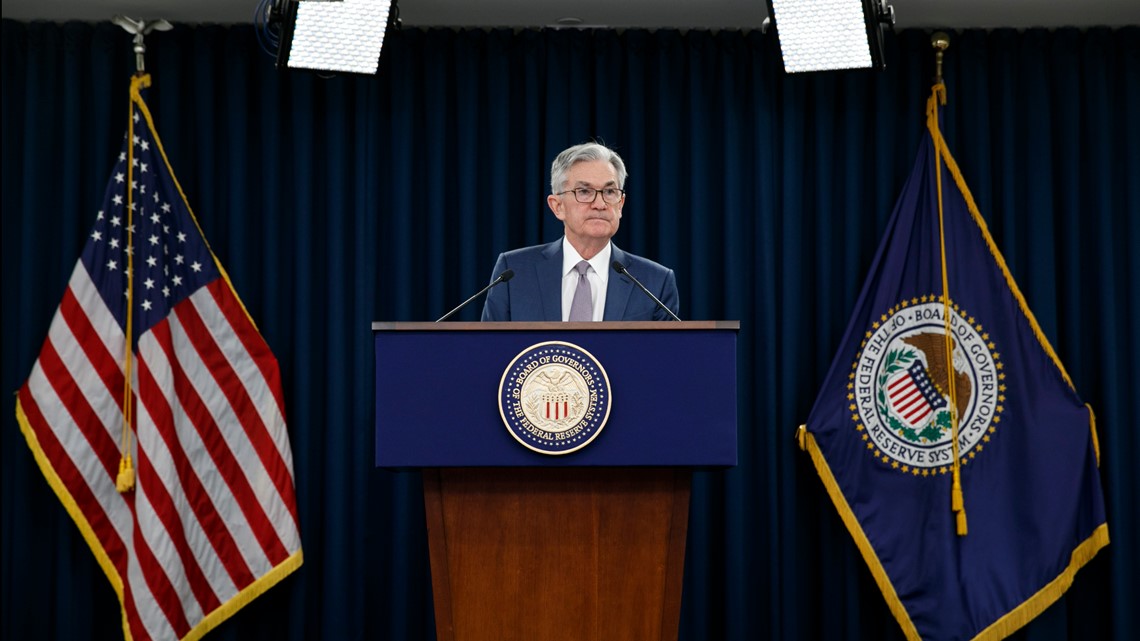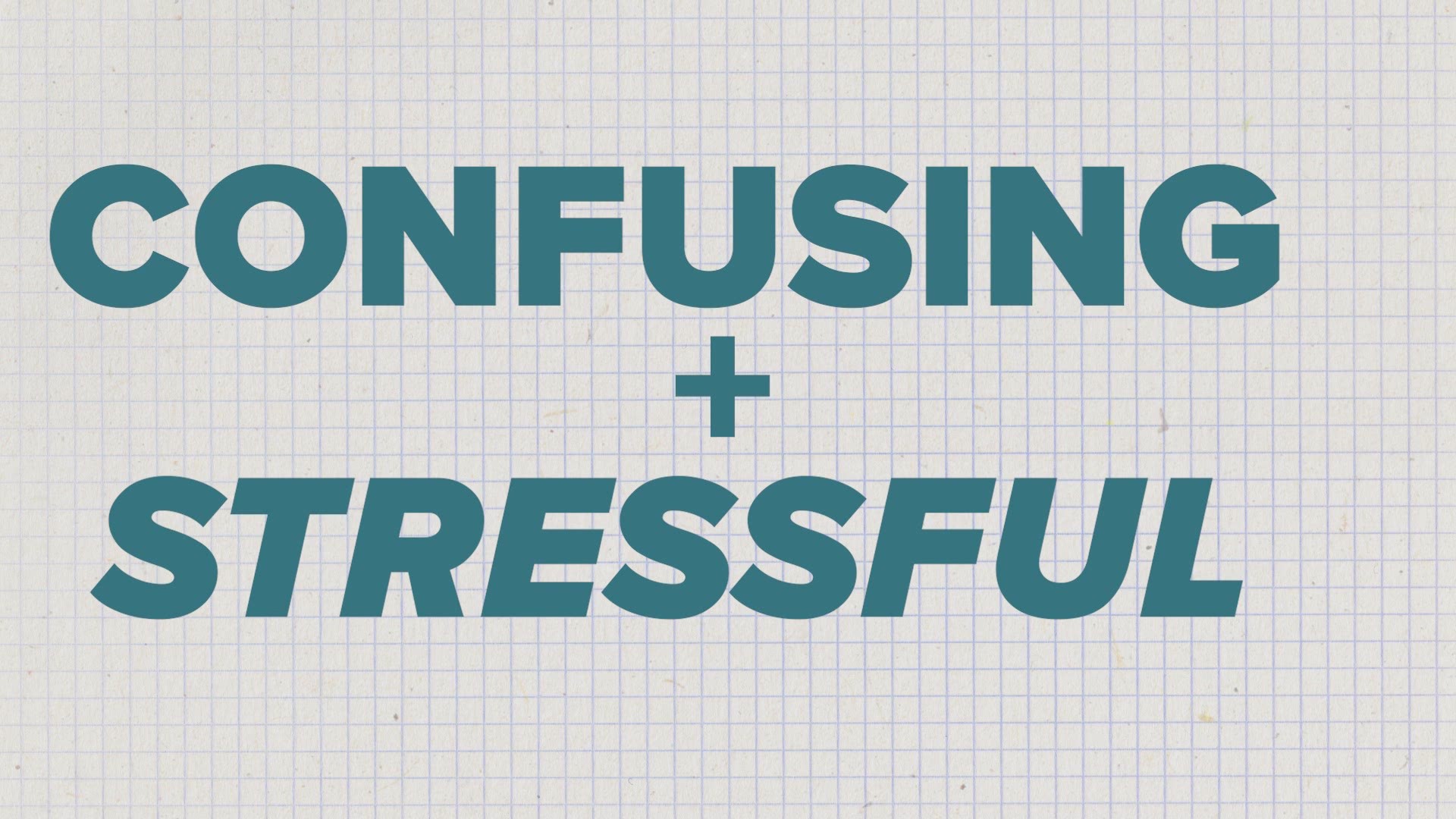WASHINGTON — The Federal Reserve signaled Wednesday that it will keep its key short-term interest rate near zero for the foreseeable future as part of its extraordinary efforts to bolster an economy that is sinking into its worst crisis since the 1930s.
Chairman Jerome Powell noted the gravity of the downturn caused by the coronavirus outbreak and made clear that the Fed would continue to do all that it could to provide support.
Speaking at a virtual news news conference, Powell said he believed the viral outbreak would imperil the economy for potentially a year or more, particularly if a vaccine or an effective treatment isn't developed before then. He warned that a deep and prolonged recession could cause devastating damage by forcing businesses into bankruptcy, keeping unemployment high and eroding the skills of idled workers.
“It will probably take some time for us to get back to a more normal level of employment and ultimately, maximum employment,” the chairman said.
Powell made a forceful, if indirect, plea for Congress to spend as much as necessary to aid workers and businesses. And despite his previously expressed concerns about surging deficits, Powell urged Congress not to fret about the cost of expanded government aid. Congress has already approved more than $2.5 trillion in rescue programs.
“Elected officials have power to tax and spend and direct how we as a society direct our resources," he said. "This direct support can make a critical difference in limiting long-lasting damage to our economy.”
The chairman did not explicitly mention the need for aid to state and local governments, a subject of contention in Congress. Yet many economists have warned that states and cities urgently need more financial help to avoid layoffs and spending cuts that would deepen the economic downturn.
Unlike Congress, the Fed's powers are limited, Powell noted, by the fact that it can provide only loans, not grants. And for many businesses that are struggling to survive, additional debt isn't a good option. Even so, the chairman stressed that the Fed would continue to provide whatever support it can through an array of emergency lending and bond buying programs.
“We will use our powers forcefully, proactively, and aggressively until we’re confident that we are solidly on the road to recovery,” he said.
In a statement it issued after its latest policy meeting ended, the Fed raised concerns about slowing inflation, which is likely to sink further below its 2% target level in the coming months. Constance Hunter, chief economist at KPMG, said this reference suggested that the Fed is prepared to keep rates ultra-low for as long as it take to raise inflation back to its target.
“We’re looking at a situation where the Fed does not move rates up for at least a year and a half, or even two years,” she said.
Asked about eventually lifting rates, Powell made clear that that wouldn’t happen for many months at least.
“We are going to wait until we are quite confident the economy is on the road to recovery,” he said.
Some Fed watchers think the policymakers may eventually announce additional support for the economy. Ryan Sweet, an economist at Moody's Analytics, said the Fed may start to buy enough short-term Treasurys to keep interest rates on one-year or two-year Treasury notes at zero. Doing so would signal that the Fed plans to keep its benchmark rate near zero for that long as well.
Under Powell, the Fed is confronting a deeply perilous moment for an economy that had looked robust just a few months ago. Since the virus struck with full force last month, widespread business shutdowns have likely pushed the unemployment rate as high as 20%. As layoffs mount, retail sales are sinking, along with manufacturing, construction, home sales and consumer confidence.
At his news conference, the chairman noted that layoffs have struck hardest at the lowest-income American workers, many of whom had just begun to make progress in the 11th year of an economic expansion that has now ended.
“It is heartbreaking to see that is threatened now,” Powell said.
During two emergency meetings in March, the Fed cut its benchmark rate to a range between zero and 0.25%. It has also announced nine new lending programs to pump cash into financial markets and provide support to large and medium-sized businesses as well as cities and states.
In its statement, the Fed said it will also keep buying Treasury and mortgage bonds to help keep rates low and ensure that companies can lend easily to each other. It did not specify any amounts or timing for its bond purchases.
The Fed’s statement came on the same day that the Commerce Department released grim news about the economy: Economic output shrank at a 4.8% annual rate in the first three months of the year — the worst showing since the Great Recession struck near the end of 2008. The economic picture is expected to grow ever darker, with the economy forecast to contract at a shocking 30% to 40% annual rate in the April-June quarter.
The Fed announced earlier this month that it will buy corporate bonds and lend to states and cities — two actions it has never previously taken. As part of a $2.3 trillion lending program, the Fed has said it will buy up to $500 billion in state and local municipal bonds. It has also unveiled a Main Street Lending Program, which will lend $600 billion to medium-sized companies of up 10,000 employees.
___
AP Economics Writer Martin Crutsinger contributed to this report.



